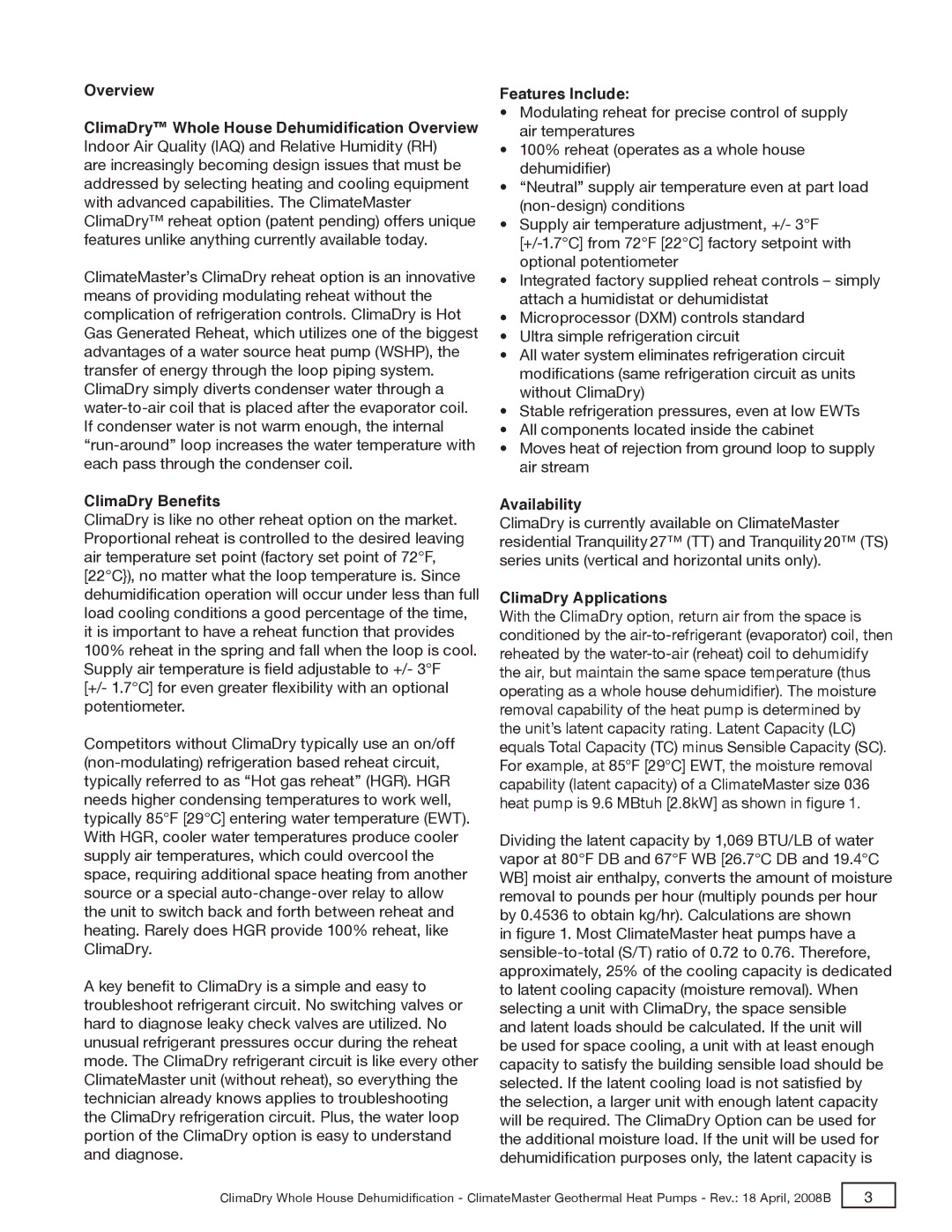TRANQUILITY 20, TRANQUILITY 27 specifications
Toshiba has made significant strides in the realm of home appliances, particularly with its TRANQUILITY series. Two standout models, the TRANQUILITY 27 and TRANQUILITY 20, deliver innovative features designed to enhance comfort and convenience in everyday living.The TRANQUILITY 27 is designed for users who demand efficiency without compromising on performance. With its compact size, this air conditioning unit is ideal for small to medium-sized spaces. One of its main features is the advanced inverter technology, which adjusts the compressor speed based on the room's temperature. This ensures a steady and comfortable climate while maximizing energy savings, making it perfect for environmentally conscious consumers.
Another noteworthy characteristic of the TRANQUILITY 27 is its whisper-quiet operation. Engineered to operate at minimal noise levels, it allows users to enjoy a peaceful environment, whether they are working from home or unwinding in their living areas. Coupled with an easy-to-use remote control and a user-friendly interface, the TRANQUILITY 27 offers a seamless experience. The unit also incorporates a programmable timer, allowing users to set specific operation times according to their schedules, further enhancing convenience and efficiency.
On the other hand, the TRANQUILITY 20 caters to those seeking an ultra-compact solution for smaller spaces. This model features a sleek design that seamlessly blends in with any room decor. Its key technologies include the eco-friendly refrigerant that contributes to reduced environmental impact, aligning with Toshiba's commitment to sustainability.
Moreover, the TRANQUILITY 20 boasts a fast cooling function, enabling it to rapidly lower the temperature in small areas. This is particularly beneficial during those sweltering summer months when immediate relief is essential. The energy efficiency of this model is amplified by its ability to maintain specified temperatures without excessive energy consumption.
Both models come equipped with air purification systems that enhance indoor air quality by filtering out dust and allergens, ensuring a healthier living space. Whether users opt for the TRANQUILITY 27 or the TRANQUILITY 20, they are assured of reliable performance, energy efficiency, and user-centric features.
In conclusion, Toshiba’s TRANQUILITY series exemplifies cutting-edge technology in home comfort solutions. With distinct models tailored to different user needs, Toshiba continues to push the boundaries of innovation while staying committed to sustainability and energy efficiency in the world of home appliances.
